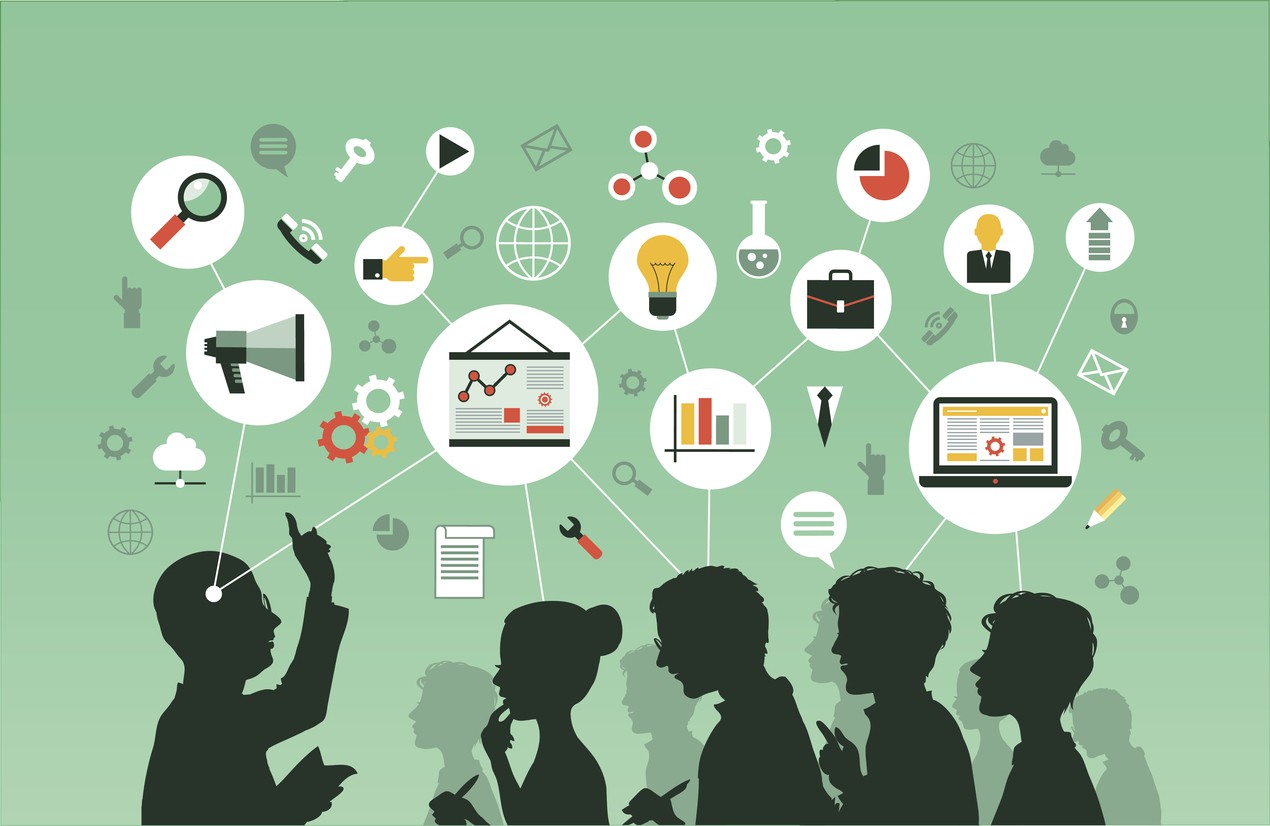Effective Collaborative Learning - The Nomadic Way
Apr 06, 2018 by Matt Burr

One of the great dangers of working in a rapidly changing industry like Learning and Development is the proliferation of fads.
Ideas, trends, or solutions pop up that seem to provide THE ANSWER about how to best adapt to the changing world. They are then the subject of a rapid hype-cycle: Research organizations and event-organizers jump on the bandwagon, thousands of “thought leaders” appear out of nowhere, and a seemingly endless number of technology platforms emerge to support the fad. Then, almost as quickly, the limitations become obvious, the thought leaders fade away or move on, the platforms consolidate or die, and a new fad emerges.
Perhaps no term better demonstrates this phenomenon than “Social Learning.” A few short years ago Social Learning was everywhere. It was pitched as the golden goose that would save L&D. LMS providers tacked on comment boxes and started calling themselves “social.” Learning Experience Platforms added an ability to share content and decided they were “social” too.
And yet, nothing fundamental seemed to really change. The level of genuine peer-to-peer interaction on digital learning platforms stayed relatively steady in most organizations. Most digital learning experiences continued to focus on individuals, learning on their own. And if you asked 100 L&D professionals what Social Learning meant, you’d get 99 different answers. As Social Learning started to mean almost anything, it became increasingly useless as a term.
In 2018, the industry conversation is shifting and the hype-cycles are moving toward something called “Collaborative Learning.” It shows all the signs of a fad in the making. Books are being written. New awards are being created. Thought Leaders everywhere are re-calibrating their personal brands.
But without a proper definition, we risk running into the same problem “Social Learning” now faces. Perhaps if we start now with a better sense of what Collaborative Learning is, we might prevent the worst excesses of the hype-cycle before they take hold.
As of now, there seem to be two basic positions on what Collaborative Learning actually means. Some folks, like Brandon Hall, use Collaborative Learning as a synonym for Social Learning (they have an award for Best use of Social/Collaborative Learning). Others, like Cornerstone, position Collaborative Learning as something entirely different, an entirely new era in the ongoing evolution of digital learning in the workplace.
We tend to agree with that latter position. We see evidence every day that Collaborative Learning solutions have the power to radically change the way learning happens in organizations by forging genuine connections, sparking massive conversations, and producing voluminous data that has no precedent in the history of our industry.
But that success carries the risk that soon anything and everything will be called “Collaborative Learning.” In a modest effort to try and break that cycle, we’d like to offer our own definition of Collaborative Learning:
Collaborative Learning (n.): Deliberately designed learning experiences that engage communities of learners in conversations that result in measurable change for individuals, teams, and organizations.
There’s a lot going on in there. Here’s a breakdown of key concepts in the definition:
Deliberately Designed:
Powerful learning experiences that have a huge impact on individuals, teams, and organizations don’t happen by accident. That means true Collaborative Learning is never fully self-directed by learners. Design here refers both to instructional design (the definition of outcomes, the sequencing of concepts, the role of assessment, the creation of exercises, etc.) and to the content that is used to engage, teach, and spark conversations. In both cases, the goal of the design/content in collaborative learning is different from traditional e-learning. Success is measured not just by engagement and completion, but by the quantity and quality of conversation.
Learning Experiences:
Almost everything we do in the workplace is collaborative. It’s important that collaborative learning experiences be clearly distinguished from that more common, everyday form of collaboration. When a person enters “learning” mode, their perspective changes, their willingness to take risks increases, their openness to new ways of thinking expands.
Communities of Learners:
At the heart of the collaborative learning experience is the real sense that you are in it together with other learners, that you expect to get to know your fellow learners, that those learners have real things to share and teach you, and that the quality of other people's experiences is also at least in part determined by your level of participation. That’s what it means to be a member of a community: a sense of mutual obligation for each other’s success.
Conversations:
This is the very heart of the definition. If learners aren’t engaged in meaningful conversations and real dialogue, it’s not Collaborative Learning. Many other learning solutions confuse simple social functionality (“likes”, “recommendations”, “playlists”) with actual, meaningful interactions between learners. For learning to be “Collaborative,” in our sense of the word, conversation is by far the most important metric.
Measurable Change:
The question of ROI in learning is immensely complex and can change substantially depending on the strategic goal. But one simple thing is true of all learning: it’s about change. If the learning experience hasn’t changed the way someone thinks, acts, and sees the world, it didn’t work. For Collaborative Learning, the intended change is usually less about particular skill development or small behavior change, and more about shifts in mindset and ways of approaching work. Whatever it is, however, there must be clear and simple ways to measure the change, or there is no way to improve the next time.
Individuals, Teams, and Organizations:
Historically, learning and development has focused on individuals. But today’s most important work is done on teams, not as individuals. There are surprisingly few models for successfully assessing, teaching, and measuring the learning performance of teams, let alone teams-of-teams or whole organizations. Collaborative Learning solutions are team- and organization-centric. Individuals still have powerful learning experiences, but well-designed Collaborative Learning solutions are some of the only ways to engage, educate, measure, and improve the learning agility of teams and organizations.
Now, this may not be the best definition of Collaborative Learning. We are happy to debate alternatives. But our hope is that alternative approaches should aim for a similar level of specificity. For Collaborative Learning to mean something useful to our profession, we have to also be clear about what it does not mean.
If we can agree on that, perhaps we can prevent Collaborative Learning from becoming just one more fad. And perhaps (perhaps!) we can use it as a way to drive the transformational change our industry so urgently needs.
Nomadic is the world’s leading collaborative learning solution for the enterprise - Request a demo and see how collaboration can change the way you learn in our organization!



